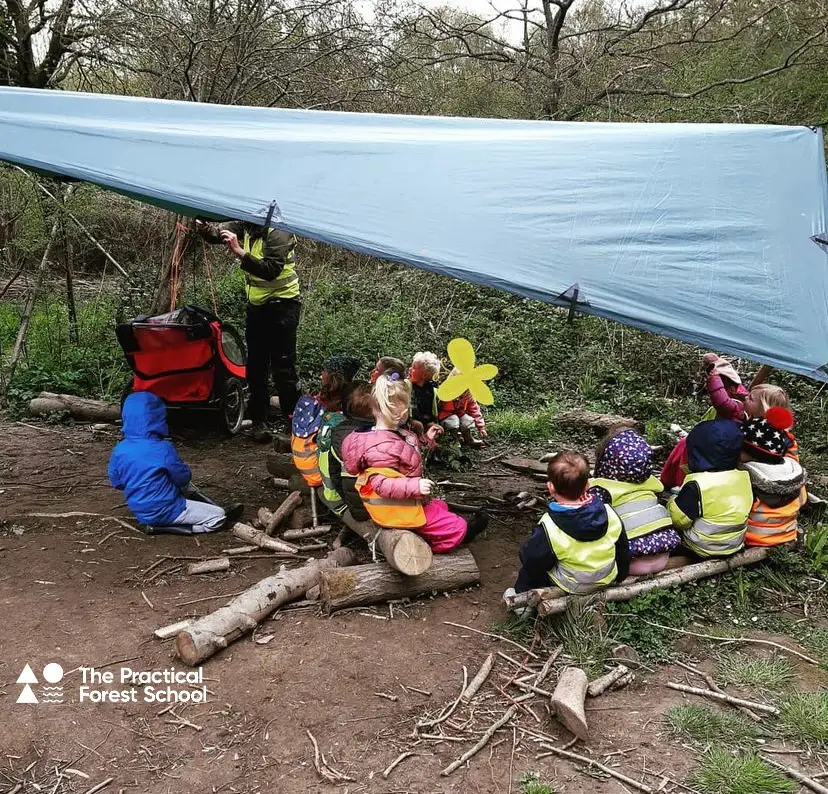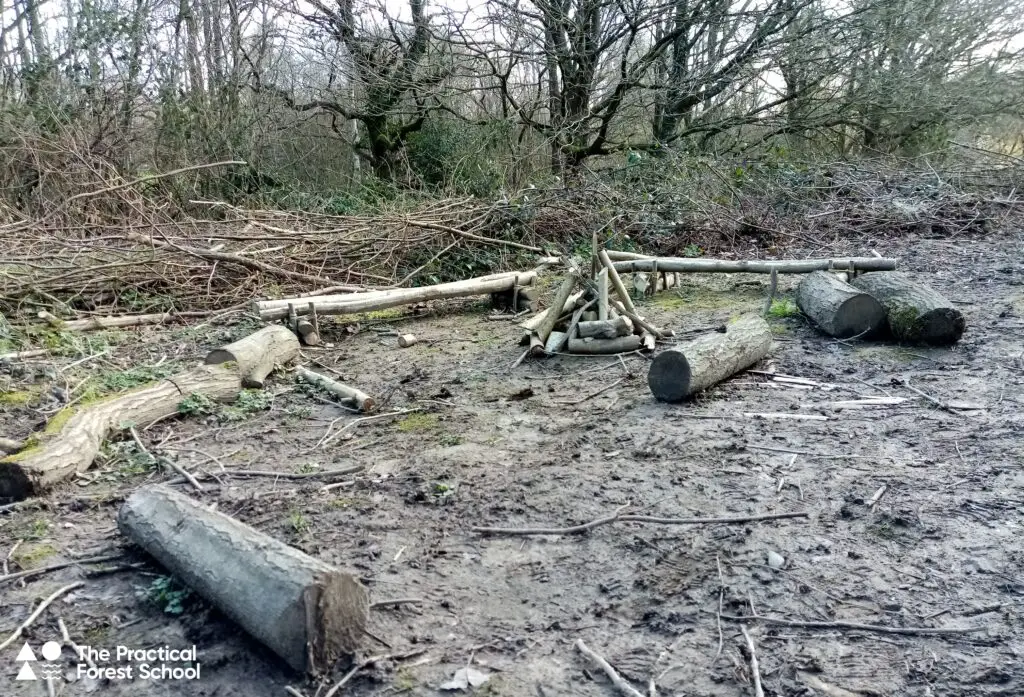Delivery of a Forest School Programme
This article contains affiliate links at no cost to you.
Are you taking the Level 3 Forest School Leader training? If so, you’ll need to facilitate a 6-session ‘Introduction to Forest School’ programme and evidence that in your portfolio. This article is all about the Delivery unit of your forest school course.
I’ll also share some forest school portfolio examples so you can see the kinds of things that are expected for your submission.
The final unit in the training is the Forest School delivery: the evidence that you can lead forest school sessions for learners in a way that is in line with the principles and ethos of forest school. The exact name of your unit might be different, but it will cover the same or similar topics. I completed my Level 3 portfolio in 2018 and below I share a shortened and edited version of what I submitted.
This is not offered for you to copy – plagiarism is both not necessary and not supportive of your development as a Forest School Leader. Instead, it’s just to give you some starting points about what kinds of things could be included when you write your own.
The Delivery Unit
This unit of the forest school leader training has the following learning outcomes:
- Be able to facilitate an ‘Introduction to Forest School’ programme according to the Forest School ethos and principles
- Be able to assess the impact of the ‘Introduction to Forest School’ programme on participants
- Be able to evaluate an ‘Introduction to Forest School’ programme.
This is the unit that will take the most time. You’ll have to put together the session plans, protocols, policies, handbook, risk assessments and basically do the job. This unit is where your assessor will turn up to watch you in action so you gain your qualification with the confidence that you truly are a Forest School Leader. There’s also an emphasis on the essential elements of reflection on your practice, so you’ll want to be able to evidence that all the way through this unit as well.
Let’s look at each of those learning outcomes in more detail.
1. Facilitate an ‘Introduction to Forest School’ programme
The assessment criteria for this section is to facilitate your programme with a minimum of 6 sessions, demonstrating flexibility in response to individual needs.

Forest School Level 3 portfolio example
It’s going to be hard to provide examples for this section because each individual programme and observations/reflections that follow are unique to the Leader. However, I’ll try to provide some pointers.
In this section, I simply wrote about the logistics of my programme: the number of sessions, location, dates and the documentation provided to support the set up and facilitation of the sessions including:
- Observation sheet
- Session plans including observations and evaluations and pictures from the session
- List of leader-led activities
- Daily risk assessment
- Tool maintenance log
- Accident report form
- Copy of DBS and first aid certificate
- Copy of emails to parents and headteacher at the school where I was providing the sessions
- Copy of liability insurance.
2. Be able to assess the impact of your programme
The assessment criteria for this section are twofold:
- Observe a minimum of 3 participants, assessing the impact of the programme on their learning and development
- Make recommendations for progressing each individual’s learning and development as the programme continues.
Forest School Level 3 portfolio example
I wrote about the 3 children I observed, identifying them by first initial only. It was hard to do the observations, as running sessions by myself means it is difficult to step out of the running of the session to do meaningful observations on a weekly basis. This will be easier if you have someone who is running sessions alongside you as you can take it in turns to act as the observer in order to fully reflect on the learners’ development.
I talked about what each child was like before they began the programme and then what I had seen in them as a result of their participation in forest school.
3. Evaluate your ‘Introduction to Forest School’ programme
There are also two assessment criteria to meet in this section:
- Evaluate each session of your programme showing how observations and evaluations inform future session plans
- Carry out a summative evaluation at the end of your programme explaining how this will inform your long-term forest school strategy.

Forest School Level 3 portfolio example
I wrote about the ways to assess my programme and reflected on how it had gone, discussing the challenges of running sessions by myself as well as how to manage the site during the changing seasons. I included reflections on what I would do differently as I continue working with this group as well as what would stay the same. I also shared a photo of a thank you card I had received from two of the children.
If you have thank you notes, why not include them in your portfolio? They act as supporting evidence that the participants are taking something away from the sessions and they can underpin your own evaluation and reflection too.
Creating your portfolio
Your training provider will probably provide guidance notes – I got helpful guidance notes from the Sussex Wildlife Trust which were useful in identifying the major points and topics to include in my responses. The notes also sometimes provided a word length, which was helpful.
Your trainer will also have advice, and my group created a WhatsApp group so there was a lot of chat on there as we went through our training.
Good luck with your Forest School Leader training!
Read next:
- Forest School Programmes and the Woodland Environment
- Practical Skills for a Forest School Programme
- Learning and Development at a Forest School Programme
- Planning and Preparation at a Forest School Programme

About the author: Jon Borley
Jon qualified as a Level 3 Forest School Leader with the Sussex Wildlife Trust. He works independently as a practitioner running forest school clubs and also within schools both in a forest school capacity and as an outdoor learning teaching assistant, working with preschoolers to secondary-aged children. He has previously led sessions for adults as part of professional development events for the Sussex FSA, and is a member of MIAS.